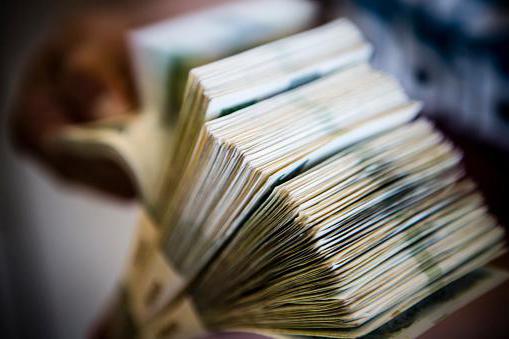Global economic processes, heterogeneity of scientific progress in various countries of the world, as well as increased industrial competition lead to such a phenomenon as capital export. At the same time, there are negative phenomena in the economy of the country from which the outflow occurred. The state, which accepts additional investments, on the contrary, remains the winner. It receives additional opportunities for development.
The outflow of capital occurs for several reasons. To ensure the harmonious development of the country's economy, it is necessary to take measures to create favorable conditions for the import of capital. What affects the process of moving investment flows will be discussed later.
World export
Capital export is the process of exporting investments to the territory of another country. These funds are most often invested in industrial, technological sectors. This is a typical phenomenon for the capitalist economy.
Export began to develop actively in the 19th century. Money was exported from different countries for investment in the economy of another country. Moreover, the owner of the capital had advantages in the production of a product. For example, labor was cheaper abroad, material or other costs could be significantly reduced. It could also be more attractive tax laws. At the same time, the investor made big profits. Theoretically, it was higher than in the territory of his native country.
Many reasons led to the outflow of capital from the state. Previously, cash owners invested them in plantations or in extractive industries. The main reasons for the export of capital Today they consist of a more advanced technological base for production. Also, large corporations began to strive to produce various high-tech products outside their own country. This allows you to increase net profit at times.
Today, capital exports are growing steadily. With each year, portfolio investments amount to approximately 600 billion conventional units, and direct investment in various sectors of the economy of other countries - 300 billion conventional units. Moreover, the same state can be both an exporter and an importer of capital. This significantly increases production competition between countries of the world community.
The reasons
The main reasons for the export of capital associated with certain problems in the economy. First of all, this may be the instability of the policy of the governing bodies. Investors are trying to maintain their capital. Therefore, they are looking for safe conditions for investing their capital.
Also, an increase in exports may be affected by the low interest rate of the national currency. Owners of funds transfer their capital to foreign banknotes. Such deposits are made at high interest rates, which entails an increase in real investor profit.
If the level of development of the country's economy does not even reach average indicators, the owner of the capital does not have the opportunity to invest his money profitably. In this case, there may be an excess of possible investment, but in reality this process does not occur. In this case, the owners of such resources are looking for new opportunities in developed countries.
High tax rates also discourage investors. Business activity is growing in tax-free zones or regions where such levies are minimal.
Adverse investment conditions may arise in the country due to the impossibility of free trade. Significant amounts are deposited in this case abroad.
Legal instability, the lack of full protection of rights and guarantees for the capital owner also contribute to the development of exports. Knowing reasons for exporting capital, the state government should take measures to create favorable conditions for doing business within the country.
Reasons for Import
Export and import of capital arise due to almost identical reasons. If export is growing in one country, import may increase in another. Cash inflows are stimulated by a number of factors.
First of all, the main reasons for imports include high government spending on scientific research, the search for new technologies. If an investor seeks to obtain similar developments for the manufacture of his products, he will import capital into the country.
The degree of professionalism of workers is also of great importance. The higher the level of education and the experience of labor resources or the cheaper their salaries, the more investment goes into the country's economy.
This may also be affected by advertising costs. Production costs significantly affect the change in imports. Large corporations are interested in supplying their capital to the economies of other countries. In this way they stimulate the effect of scale of production, occupy new markets and significantly increase net profit. Therefore, the larger the organization, the stronger it is interested in moving its capital to the economy of other states.
Export and import of capital also depend on the degree of protection of the domestic product market. High guarantees to protect the rights and interests of investors stimulate the import of their capital into the country. Owners are interested in importing their funds into the domestic market of the state, if it is significant in size.
Export Forms
There are several basic forms of capital export. Conventionally, they can be divided into 2 groups. These are entrepreneurial and loan investments. In the first case, the investor acquires stocks, bonds or other securities of a foreign organization. At the same time, the owner of the funds is involved in the process of manufacturing products by another state and receives profit for this in the form of interest or dividends.
The loan form of export is manifested in the provision of credit to another state. Such investments are placed in foreign bank accounts.
Entrepreneurial investments can be portfolio or direct. In the first case, the investor does not have the right to participate in the management of the company. Direct investment, on the contrary, provides such a right. An investor is involved in making decisions regarding the activities of a foreign enterprise, and exercises control over its activities.
Loan investments provide the owner with high interest rates. However, the risk of non-return of such investments will be higher.
Types of investments
World export of capital carried out by means of loans, loans, bank deposits. They may include assistance to another country. There are also a huge number of other types of exported investments. They are usually classified as others. In most cases, such forms of capital outflows result in significant profits for the investor. He brings the funds back to his country.
Portfolio investments include bonds, other debt securities, and small blocks of shares. In a separate group are financial derivatives. They were formed as a result of the issuance of contractual obligations or other securities. Derivatives may include options.In order to avoid double counting of such investments, they are taken into account in international statistics of capital flows with a sign opposite to portfolio deposits.
Capital Export Goals may be different. If the owner of the funds wants to participate in the management of the company for a long time, he can export direct investments. In this case, he redeems at least 10% of the shares. In this case, the state from which the outflow of capital occurred, for a long time or never receives a refund. An investor with a high degree of probability remains to conduct business in the territory of another country.
Legal and illegal capital import
Export of goods and capital may be legal or illegal. For this reason, in world statistics, the total export may be less than its import.
In case of illegal export, capital is transferred from the state in violation of the established legislation. For example, it may be an outflow, which is carried out by one-day firms. They are registered through dummies. Moreover, in a short period of time, such an organization performs only one or several operations. After that, the company ceases to operate.
In many countries, there is a requirement for the mandatory return of exported funds, as well as profits from such activities, profits back to the state. It is this requirement that unscrupulous companies try to circumvent. Such funds are deposited in the economy of foreign countries. In this case, the money is exported in cash without registration.
With illegal exports, transfer prices may also be set. The cost of goods is artificially low. When they are sold at higher prices, the profit received remains abroad.
Net export
Net capital export also called the "flight of investment." Its definition covers both legal and illegal outflows of funds. Applying such capital in one’s country, one could theoretically increase the level of GDP. These funds could be used to finance business within the state from own sources of capital. Since the funds were transferred to the territory of another country, the investor state did not receive a certain amount of profit.
Net exports can be calculated according to the method developed by the IMF:
SE = LDPE + STI + STB - IZR, where LDP - the increase in the external debt of the state, JI - the balance of direct investments, STB - the balance of payments of the country in the current period, IZR - change in the level of gold and foreign exchange reserves.
The meaning of this technique is in two main statements. If the current account balance of the country is stably positive, this is a sign (albeit indirect) of its inability to accumulate investments and savings coming from abroad. Outside the borders of the state, such savings do not reduce the amount of external debt, nor increase the inflow of capital into it.
Exploring for example clean export of Russian capital in the first decade of the 21st century, you can see the following:
SE = 10 + 412 + 737 - 477 = 682 billion e.
If we compare the result with the total amount of capital exported from the country, which is 818 billion yoy. e., adverse events will become apparent. Almost more than 80% of the capital exported from Russia does not bring profit to the state and does not contribute to the development of its own economy.
Export geography
Export of capital means for the country, missed opportunities for their own development, subject to high rates of illegal outflow of funds, as well as their non-return to the state. However, such movements do not always lead to negative consequences. This is confirmed by international statistics.The largest exporters are such developed countries as the USA, Great Britain, Germany and Japan.
The structure of their capital outflow consists of legal investments profitable for the country. When doing business in other countries, such countries receive significant profits. Funds allocated to the economy of foreign countries are returned back with interest.
Net imports prevail in the structure of the movement of US financial resources. The capitals of many states flock here. Japan accepts imports of capital in much smaller quantities. However, it is the largest exporter of capital in the world. Western Europe does business through mutual investment.
Less developed countries have a modest share in international capital flows. This is due to insufficient internal accumulations. At the stage of industrial development, the domestic market needs a huge amount of investment. Underdevelopment also impedes the import of capital into such countries.
Russia is exporting much more capital than it is importing. This trend has persisted for several decades. This is an extremely negative trend. The positive value of the net import / export balance in our country was observed only in 2007.
The main global trends
World capital export characterized by certain trends. The total mass of the movement of funds is dominated by direct investment. The increasing role of public administration in this process is also noted.
Commercial government loans, grants, subsidies, and long-term loans for the development of the economies of developing countries account for 90% of the total export.
Relatively new trends are the procedures for the export of investments through the European Bank, IMF, and the World Bank. Also, the instability of the economy and politics in developing countries has led industrialized states to transfer their capital without fail to transfer credit or other funds to their economy.
In the current process of capital export, the tendency to create organizations that ensure security and guarantee the return of funds back to the owner prevails. Such companies operate in almost all countries that are major exporters of capital.
Ways to reduce exports
Capital export can be reduced at the state level. There are two main methods for this in the world. With their competent application and control, it is possible to significantly reduce the export of currency outside the state.
The first approach involves the establishment of administrative barriers and the implementation of procedures for regulating such actions by the government. For example, it may be a requirement to necessarily sell all or part of the foreign exchange earnings or the introduction of standards for conducting foreign exchange control.
The second approach is more constructive. He intends to create the most favorable conditions for doing business within the state. To do this, investors need to guarantee economic and political stability, give legal guarantees to protect their rights and interests. In this case, the capital will cease to leave the country. Inverse trends will be observed. Capital imports will gradually increase.
Having considered what constitutes export of capital its features and consequences, you can understand the importance of regulating this process by the ruling bodies, establishing favorable conditions for doing business within the country.